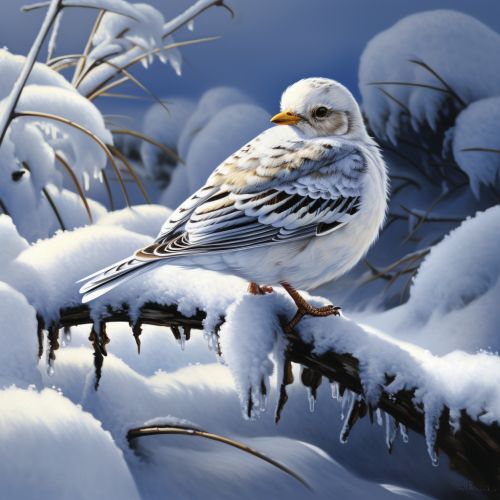Snow Bunting
Taxonomy and Description
The Snow Bunting (Plectrophenax nivalis) is a small passerine bird in the family Calcariidae. It is characterized by its white plumage, which serves as camouflage in its snowy habitats. The male's breeding plumage is almost entirely white, while the female and young birds have more brown and black on their upperparts. The species has a circumpolar distribution, and is found in the high Arctic tundra during the breeding season. In winter, it migrates south to temperate regions.


Distribution and Habitat
The Snow Bunting breeds in the high Arctic across North America, Europe, and Asia. It prefers open, barren landscapes such as tundra, mountains, and cliffs. During the non-breeding season, it migrates south to the northern United States, southern Canada, and northern Eurasia. It can also be found in coastal areas, where it forages along beaches and rocky shorelines.
Behavior and Ecology
Snow Buntings are diurnal, active during the day. They are social birds, often seen in flocks, especially during migration and in their wintering grounds. Their diet consists mainly of seeds and insects. During the breeding season, they nest on the ground, often in rock crevices or under piles of stones.
Conservation Status
The Snow Bunting is not currently considered threatened or endangered. However, like many Arctic species, it may be affected by climate change in the future. Conservation efforts are focused on preserving its Arctic breeding habitat and monitoring populations to detect any potential declines.
